
Chitwan National Park: Nepal's Wildlife Wonderland
Explore Chitwan National Park, a UNESCO World Heritage Site in Nepal, home to Bengal tigers, one-horned rhinoceroses, and rich cultural experiences with the Tharu community.
Chitwan National Park, a UNESCO World Heritage Site, is a treasure trove of biodiversity nestled in the subtropical lowlands of southern Nepal. Spanning over 932 square kilometers, the park is a sanctuary for a variety of wildlife species, including the majestic Bengal tiger, the one-horned rhinoceros, and the elusive leopard. The lush landscapes of dense forests, marshlands, and grasslands offer an idyllic setting for nature enthusiasts and adventure seekers alike. Visitors to Chitwan National Park can embark on thrilling jungle safaris, either on elephant back, by jeep, or on foot, providing a unique opportunity to witness the park's rich wildlife up close. The Rapti River, flowing through the park, is home to the endangered gharial crocodile and a myriad of bird species, making it a haven for birdwatchers. Canoeing along the tranquil river offers a serene experience while spotting exotic birdlife. Cultural immersion is another highlight of visiting Chitwan National Park. The indigenous Tharu community, known for their vibrant traditions and customs, welcome visitors to their villages, offering a glimpse into their way of life. Traditional dance performances and local cuisine add to the cultural tapestry of the region, making your visit truly memorable.
Local tips in Chitwan National Park
- Best time to visit is from October to March, when the weather is pleasant and wildlife sightings are more frequent.
- Wear neutral-colored clothing to avoid attracting unwanted attention from wildlife.
- Bring binoculars for bird watching and spotting animals from a distance.
- Respect local customs when visiting Tharu villages; always ask for permission before taking photos.
- Book jungle safaris in advance, especially during peak season, to ensure availability.
Chitwan National Park: Nepal's Wildlife Wonderland
Chitwan National Park, a UNESCO World Heritage Site, is a treasure trove of biodiversity nestled in the subtropical lowlands of southern Nepal. Spanning over 932 square kilometers, the park is a sanctuary for a variety of wildlife species, including the majestic Bengal tiger, the one-horned rhinoceros, and the elusive leopard. The lush landscapes of dense forests, marshlands, and grasslands offer an idyllic setting for nature enthusiasts and adventure seekers alike. Visitors to Chitwan National Park can embark on thrilling jungle safaris, either on elephant back, by jeep, or on foot, providing a unique opportunity to witness the park's rich wildlife up close. The Rapti River, flowing through the park, is home to the endangered gharial crocodile and a myriad of bird species, making it a haven for birdwatchers. Canoeing along the tranquil river offers a serene experience while spotting exotic birdlife. Cultural immersion is another highlight of visiting Chitwan National Park. The indigenous Tharu community, known for their vibrant traditions and customs, welcome visitors to their villages, offering a glimpse into their way of life. Traditional dance performances and local cuisine add to the cultural tapestry of the region, making your visit truly memorable.
When is the best time to go to Chitwan National Park?
Iconic landmarks you can’t miss
Annapurna Conservation Area
Discover the breathtaking landscapes and rich biodiversity of the Annapurna Conservation Area, a must-visit national park in Nepal.
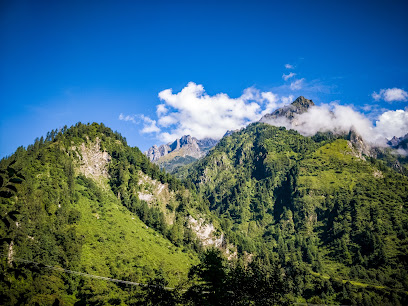
Sarangkot View Tower
Discover stunning Himalayan vistas and tranquil beauty at Sarangkot View Tower, a must-visit destination in Pokhara, Nepal.
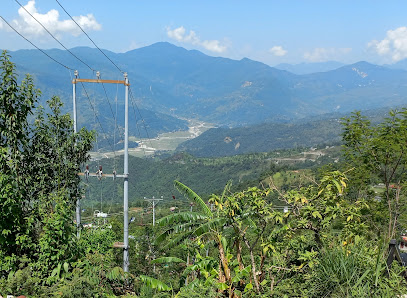
Seti River Gorge
Explore the breathtaking Seti River Gorge in Pokhara, where turquoise waters and dramatic cliffs create a natural wonderland for adventure and relaxation.
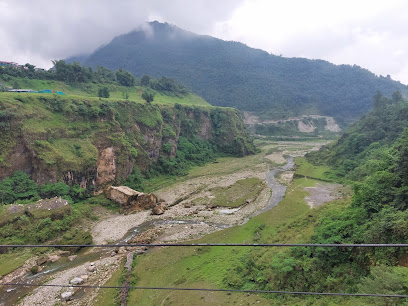
Chamere Gufa
Explore the enchanting Chamere Gufa in Pokhara, a mesmerizing cave filled with stunning rock formations and a unique bat habitat.

World Peace Pagoda
Discover tranquility and spiritual harmony at the World Peace Pagoda in Lumbini, a striking Buddhist temple surrounded by serene landscapes.
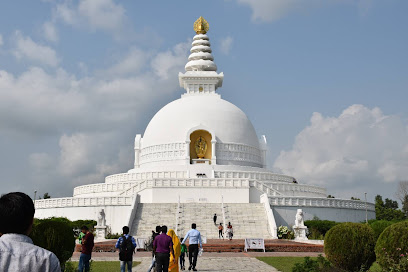
Elephant Breeding Center
Explore the Elephant Breeding Center in Chitwan, a wildlife refuge dedicated to the conservation and education of these majestic creatures amidst stunning natural beauty.
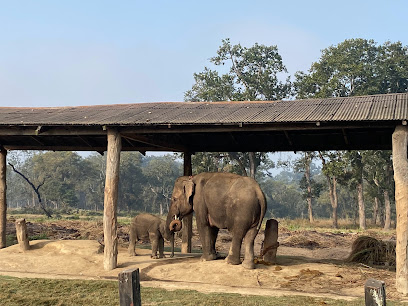
Langtang National Park
Explore Langtang National Park, a natural wonder in Nepal featuring stunning landscapes, rich biodiversity, and vibrant local culture in the heart of the Himalayas.
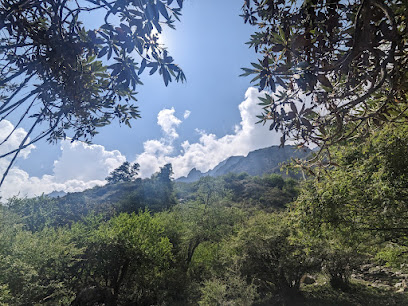
Tikauli Jungle
Discover the breathtaking biodiversity and serene landscapes of Tikauli Jungle, a national park near Bharatpur, Nepal, perfect for wildlife enthusiasts and nature lovers.
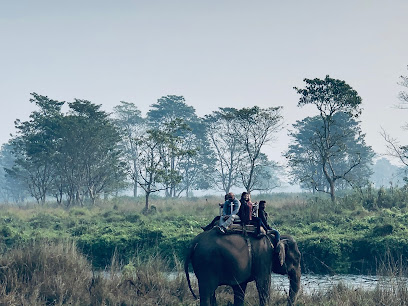
Green Park Chitwan
Unwind in luxury at Green Park Chitwan, your gateway to the wonders of Chitwan National Park and its vibrant wildlife.

NARAYANI RIVERSIDE
Discover the serene beauty of Narayani Riverside, a perfect park for relaxation and nature exploration in Bharatpur, Nepal.

Devghat Dham
Experience the spiritual essence and natural beauty of Devghat Dham, a sacred Hindu temple destination in Nepal that captivates every visitor.

Landmark Forest-Park
Experience the beauty of Chitwan National Park at Landmark Forest-Park, where luxury meets nature for an unforgettable adventure.
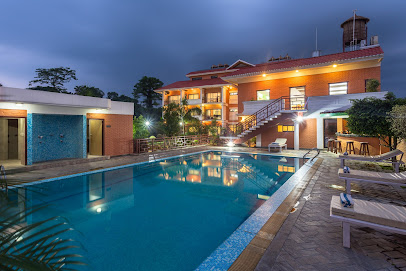
UMBRELLA STREET, PATIHANI
Experience the vibrant charm of Umbrella Street in Patihani, where colorful canopies and local culture create a unique tourist attraction.
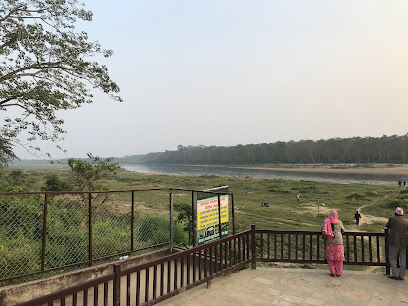
Jalbire Jharna
Experience the breathtaking beauty of Jalbire Jharna, a stunning waterfall in Chitwan, Nepal, surrounded by lush nature and rich wildlife.
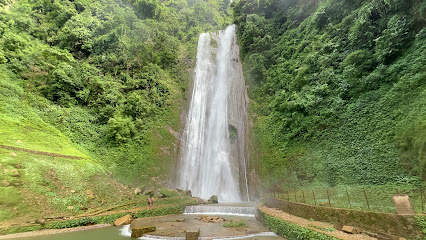
New Sauraha Tharu Cultural House
Discover the vibrant Tharu culture through captivating performances and engaging exhibits at the New Sauraha Tharu Cultural House in Chitwan, Nepal.
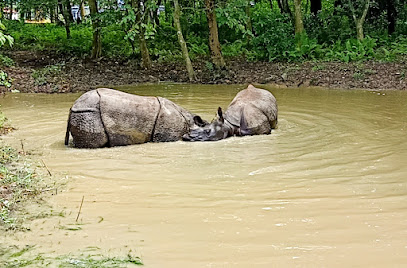
Unmissable attractions to see
Elephant Breeding Center
Experience the wonder of the Elephant Breeding Center in Chitwan, where conservation meets education in a beautiful natural setting.
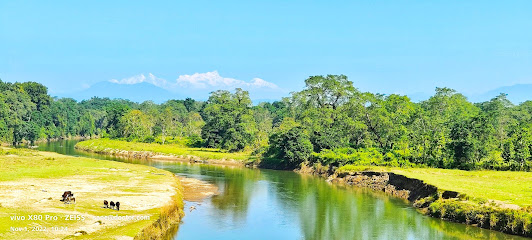
UMBRELLA STREET, PATIHANI
Discover the vibrant charm of Umbrella Street, Patihani - a colorful haven of art, culture, and delicious local cuisine.

Jalbire Jharna
Experience the stunning beauty of Jalbire Jharna, a majestic waterfall in Chitwan, offering breathtaking views and a serene escape into nature.
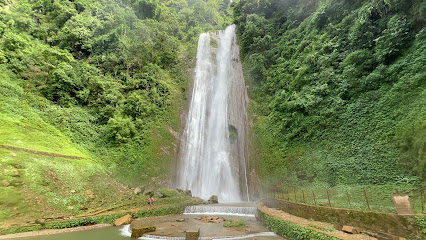
Sauraha Sunset Point
Experience the breathtaking sunsets and wildlife at Sauraha Sunset Point, a serene escape in Chitwan National Park, Nepal.
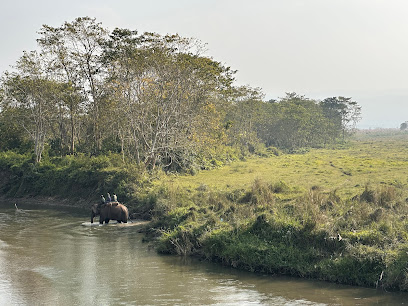
Batuli pokhari madhyawarti samudaayik ban upabhoktaa samuha
Experience the tranquil beauty and rich culture of Batuli Pokhari, a serene lake destination in Bharatpur, Nepal that captivates every visitor.
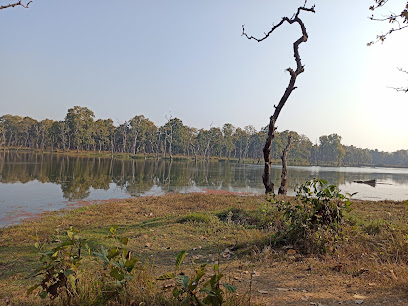
The Chitwan Jungle Guides(Crazy Tiger's Trek & Tours)
Discover the wild heart of Nepal with Chitwan Jungle Guides, where adventure meets conservation in Chitwan National Park.

Baatuli Pokhari
Experience the serene beauty of Baatuli Pokhari, a tranquil lake in Bharatpur, Nepal, surrounded by lush greenery and vibrant wildlife.
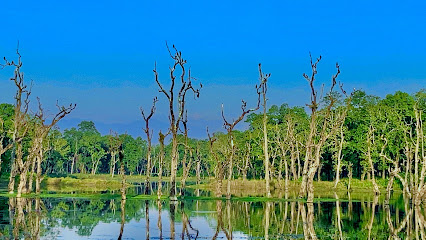
Wildlife Display & Information Center
Explore the Wildlife Display & Information Center: A gateway to understanding Nepal's rich biodiversity and conservation efforts.
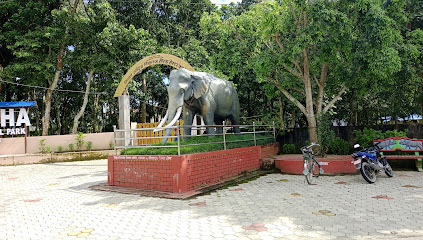
Start
Explore Bharatpur, Nepal - a serene city offering thrilling wildlife adventures and rich cultural experiences near Chitwan National Park.
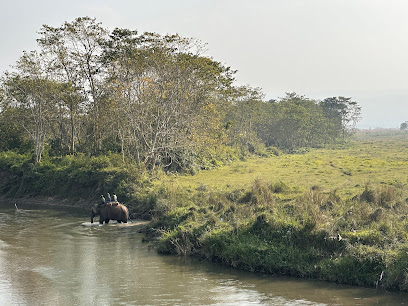
Bis Hajari Tal(Twenty Thousand Lake)
Experience the serene beauty of Bis Hajari Tal, a stunning lake in Bharatpur, perfect for nature lovers and adventure seekers alike.
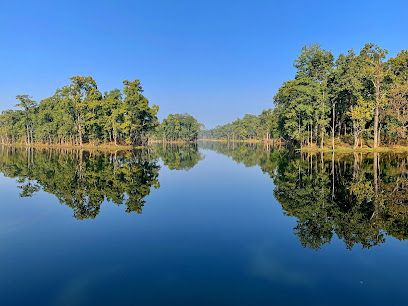
Wildlife Museum
Visit the Wildlife Museum in Ratnanagar to experience the beauty of nature and learn about the region's rich biodiversity through engaging exhibits.
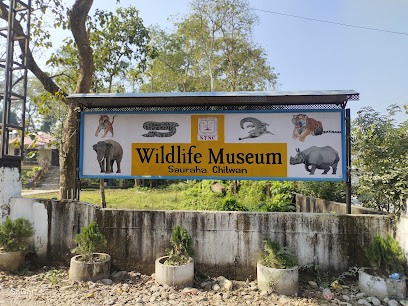
Elephant Breeding Centre Suspension Bridge
Discover the enchanting world of elephants at the Elephant Breeding Centre Suspension Bridge, a must-visit attraction in Bharatpur, Nepal.
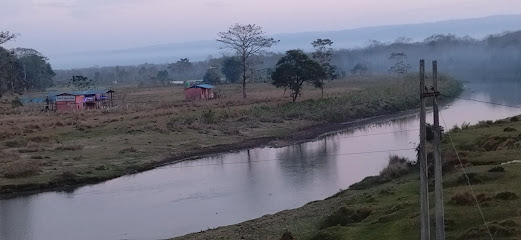
अर्फारुजि मार्ग ARPHA RUZI STREET
Explore the vibrant charm of Arpharujin Marg in Bharatpur, where local culture, delicious cuisine, and unique shopping await every traveler.
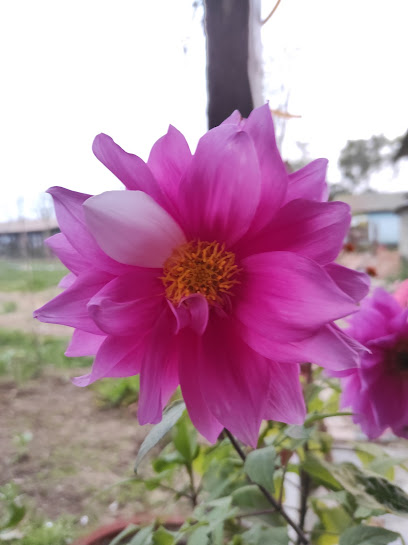
Narayani View Point Rajahar
Experience stunning panoramas and serene beauty at Narayani View Point Rajahar, a must-visit tourist attraction in Nepal.
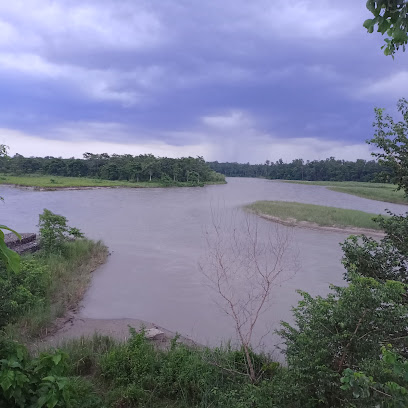
Dhurba
Explore Dhurba, a serene tourist attraction in Narayani, where culture meets nature for an unforgettable experience in the heart of Nepal.
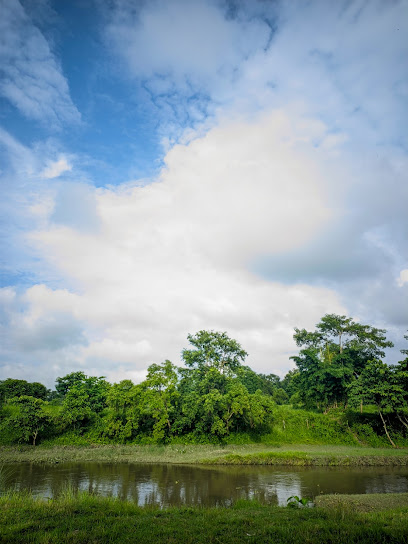
Essential places to dine
Green Park Chitwan
Experience unparalleled luxury and adventure at Green Park Chitwan, your gateway to exploring Nepal's natural wonders.

Bhetghat Restaurant
Experience authentic Nepalese cuisine at Bhetghat Restaurant in Bharatpur – savor delicious Taas and more in a vibrant atmosphere.

Landmark Forest-Park
Discover wildlife adventures and serene relaxation at Landmark Forest-Park in Chitwan National Park - a perfect getaway for nature enthusiasts.
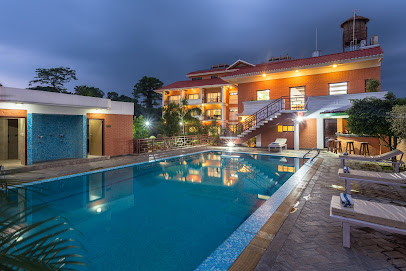
Barahi Jungle Lodge
Discover luxury amidst nature at Barahi Jungle Lodge - your perfect escape in Chitwan National Park.
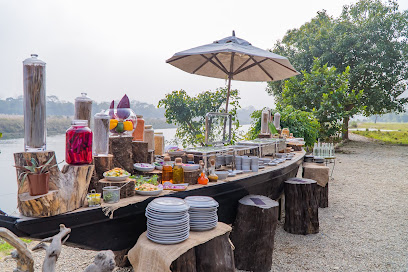
Vivanta Chitwan, Bharatpur
Discover luxury at Vivanta Chitwan - your gateway to nature's wonders in Bharatpur with modern amenities and exceptional service.
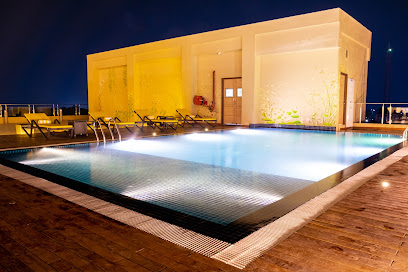
KC's Restaurant & Home
Discover KC's Restaurant & Home: A culinary oasis in Ratnanagar offering delicious local and international cuisine in a welcoming setting.
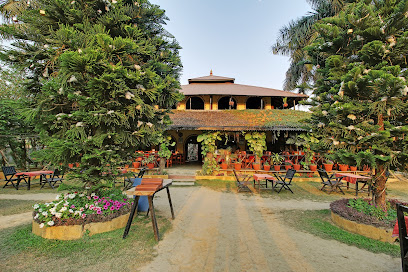
Meghauli Serai, A Taj Safari - Chitwan National Park
Discover luxury amidst nature at Meghauli Serai, A Taj Safari - your gateway to Chitwan National Park's wildlife wonders.
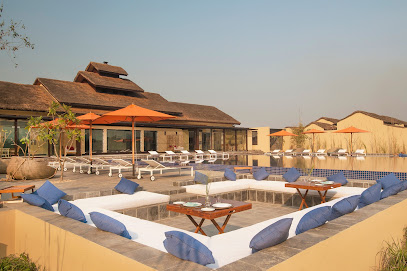
Sarang Wildlife Sanctuary
Discover diverse wildlife and breathtaking landscapes at Sarang Wildlife Sanctuary near Chitwan National Park – an eco-tourism gem in Nepal.
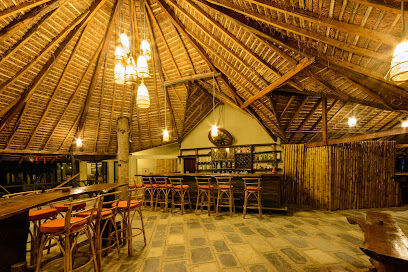
Ataali Restaurant and Bar
Experience authentic Nepali cuisine in a vibrant setting at Ataali Restaurant and Bar in Bharatpur.
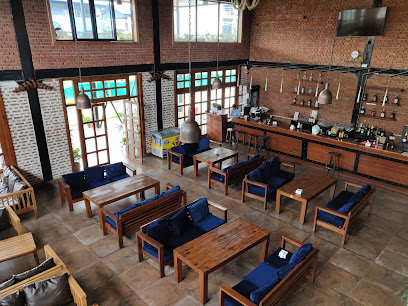
Hungry Tom
Discover a culinary gem at Hungry Tom in Bharatpur, where diverse flavors meet vibrant atmosphere along the beautiful Narayani riverside.
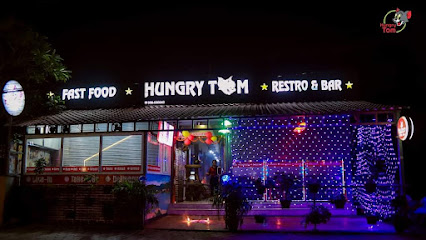
Friends Cafe
Experience the flavors of Nepal at Friends Cafe in Ratnanagar – where culinary excellence meets warm hospitality.
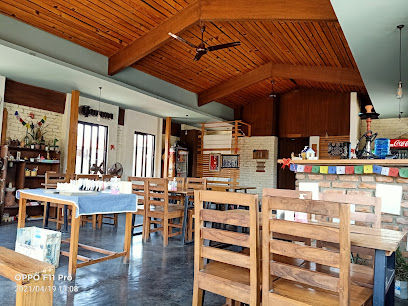
Chitwan Pate Dhido Restaurant
Discover authentic Nepalese flavors at Chitwan Pate Dhido Restaurant in Bharatpur – where tradition meets taste.

Eden Jungle Resort
Experience tranquility and adventure at Eden Jungle Resort near Chitwan National Park - a perfect blend of comfort and nature.

Chitwan Forest Resort
Experience nature's wonders at Chitwan Forest Resort - your gateway to adventure in Chitwan National Park.
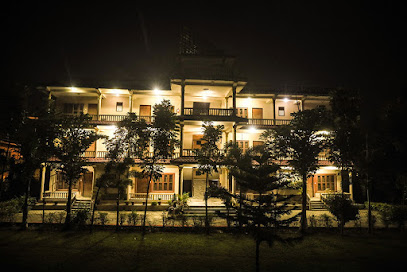
Jungle Wildlife Camp
Immerse yourself in nature's beauty at Jungle Wildlife Camp - your gateway to Chitwan National Park's rich wildlife.

Markets, malls and hidden boutiques
Chitwan National Park
Immerse yourself in the wildlife wonders of Chitwan National Park, a UNESCO heritage site filled with rich biodiversity and cultural experiences.
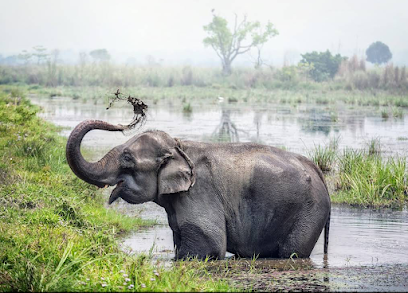
Elephant Breeding Center
Explore the Elephant Breeding Center in Chitwan, a sanctuary dedicated to elephant conservation and education within the stunning Royal Chitwan National Park.
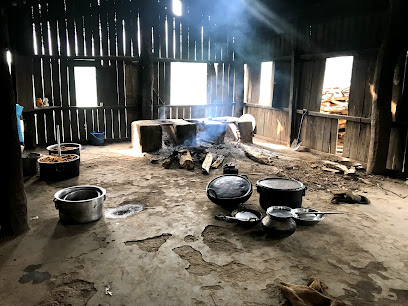
Chitwan National Park (Sauraha)
Explore the rich biodiversity and cultural heritage of Chitwan National Park, a UNESCO World Heritage site in Nepal.

Chitwan National Park Office
Explore the breathtaking beauty and diverse wildlife of Chitwan National Park, a premier destination for nature enthusiasts and adventure seekers in Nepal.
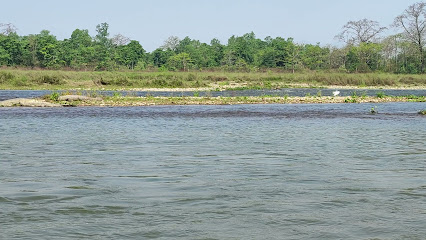
Glitterz Fashion Store
Explore the vibrant selection of stylish clothing at Glitterz Fashion Store in Bharatpur, where fashion meets affordability and local flair.

Made In Nepal Stores Pulchowk,Narayanghat
Explore the vibrant styles of Nepalese clothing and accessories at Made In Nepal Stores in Narayanghat, where culture meets craftsmanship.

All In One
Explore the flavors of Nepal at All In One, where mobile catering meets grocery shopping for a unique culinary experience.
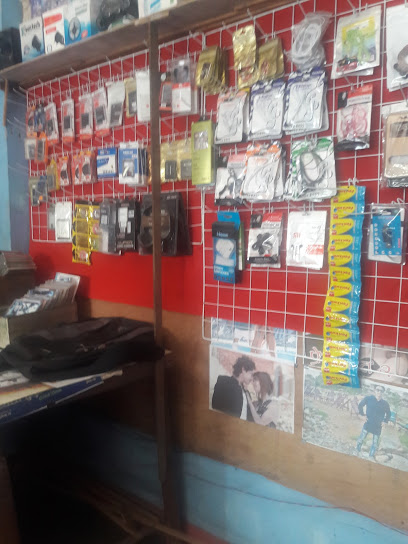
Basemark_chitwan
Explore the latest trends in women's fashion at Basemark Chitwan, a stylish clothing boutique in Bharatpur offering unique local designs.
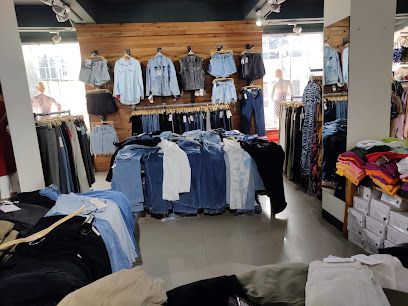
Kistabandi.com
Discover cutting-edge electronics and exceptional service at Kistabandi.com, Bharatpur's top destination for tech enthusiasts.

Everything Elephant
Explore the vibrant world of sustainable fashion at Everything Elephant in Ratnanagar, where local craftsmanship meets contemporary style.
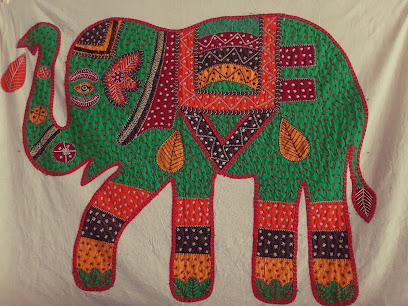
Nani's Clothing Store
Explore Nani's Clothing Store in Bharatpur for a unique blend of traditional and modern women's fashion that captures the essence of Nepal.
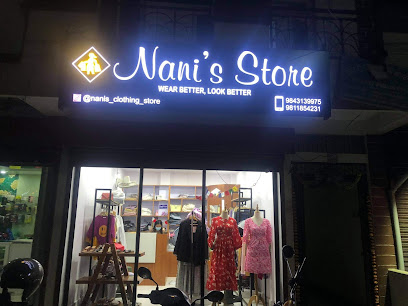
Ratan kirana pasal
Explore the rich flavors and local products at Ratan Kirana Pasal, a must-visit grocery store in Namarjung for any traveling foodie.

Made In Nepal Stores Branch Cg Landmark 1 st Floor
Explore authentic Nepali handicrafts at Made In Nepal Stores, a unique shopping destination in Bharatpur, celebrating local culture and artistry.
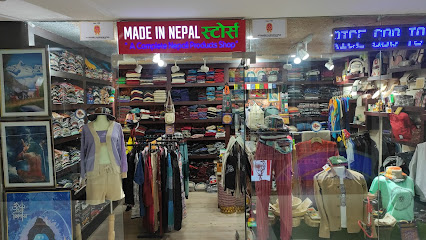
C&C Boutique(Best Boutique)
Discover unique fashion finds and stylish accessories at C&C Boutique, the ultimate destination for trendy shoppers in the city.

Triti Boutique
Discover the vibrant world of Nepali fashion and artisan crafts at Triti Boutique in Namarjung, a must-visit for culture enthusiasts.

Essential bars & hidden hideouts
The Galaxy Empire Lounge and Bar
Discover the vibrant ambiance and exquisite menu at the Galaxy Empire Lounge and Bar, a top destination for nightlife in Bharatpur.
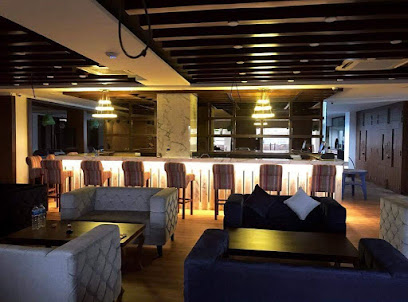
The Cave Restaurant
Discover the unique dining experience at The Cave Restaurant in Bharatpur, where delicious grilled cuisine meets a cozy, cave-inspired ambiance.

Option Restaurant
Experience the vibrant flavors of Ratnanagar at Option Restaurant, a top destination for grilled delights and warm hospitality.
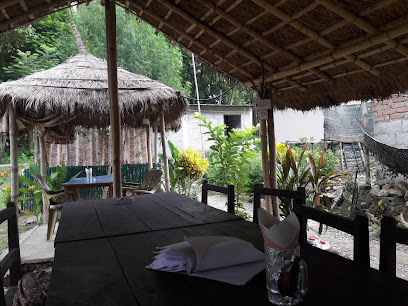
Red Horse Pub & Music Bar
Experience the vibrant nightlife at Red Horse Pub & Music Bar in Ratnanagar - where live music and a lively atmosphere await you.

Green Vill Bar
Experience the vibrant atmosphere and diverse drink offerings at Green Vill Bar in Ratnanagar, a must-visit for travelers seeking local flavor.
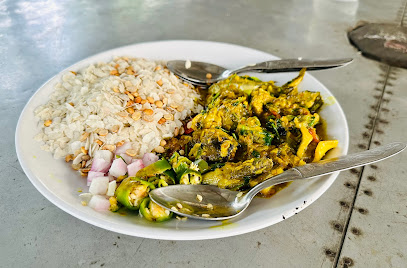
Cozy Restaurant & Bar
Discover the essence of Nepalese cuisine at Cozy Restaurant & Bar in Bharatpur, where authentic flavors and a warm atmosphere await.

Chaudhary cottage and khaja ghar
Experience the authentic flavors of Nepal at Chaudhary Cottage and Khaja Ghar, a cozy bar offering delicious Khaja and a warm atmosphere in Bharatpur.
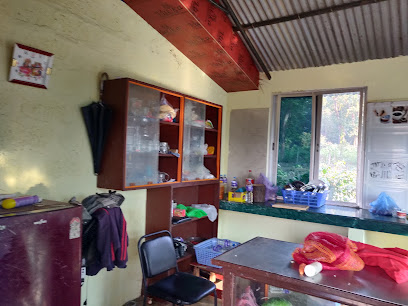
Hotel Red Apple
Discover Hotel Red Apple: A vibrant bar in Bharatpur offering a diverse drink selection and a welcoming atmosphere for all travelers.
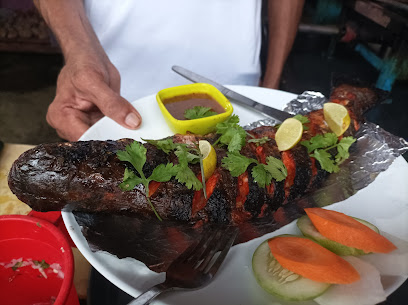
Ohrhi Lounge & Bar
Discover the perfect blend of relaxation and entertainment at Ohrhi Lounge & Bar in Bharatpur, where delightful drinks meet a cozy atmosphere.

Cottage
Discover the charm of Cottage Bar in Narayani, where local flavors and vibrant ambiance meet for an unforgettable experience.
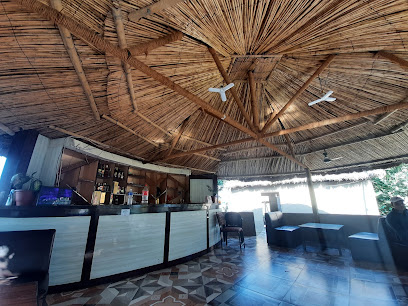
Siddhibinayak Eco Resturent
Experience the perfect blend of sustainability and flavor at Siddhibinayak Eco Restaurant in Bharatpur, a dining haven for eco-conscious travelers.
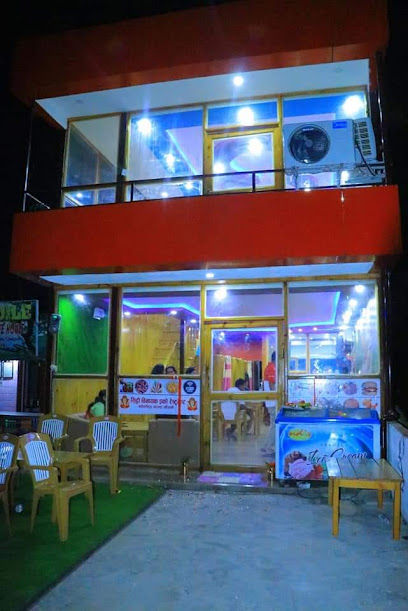
Friday Cottage Restaurant and Lodge
Discover the serene ambiance and delicious flavors at Friday Cottage Restaurant and Lodge in Bharatpur, a true culinary retreat in Nepal.
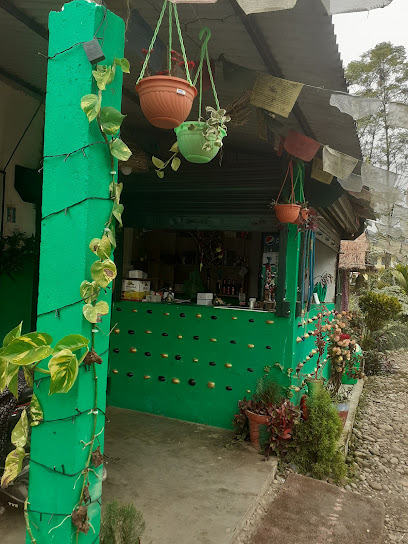
S.M Cottage
Discover the lively ambiance of S.M Cottage, a charming bar in Dibyanagar offering a delightful selection of drinks and local culture.
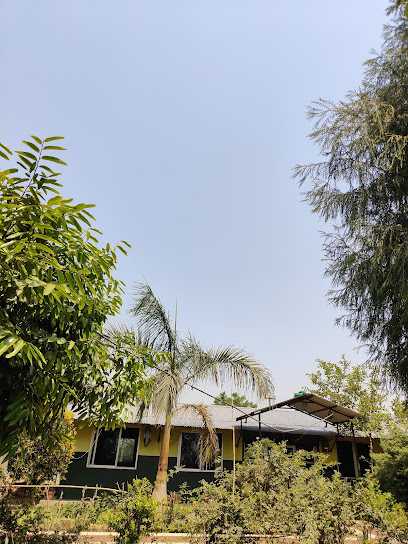
chitwan village khaja ghar
Discover the authentic flavors and vibrant culture of Nepal at Chitwan Village Khaja Ghar, a charming bar in Bharatpur.

Newari Kitchen Bar
Discover the essence of Nepalese culture at Newari Kitchen Bar, where delicious cuisine and vibrant atmosphere come together in Ratnanagar.
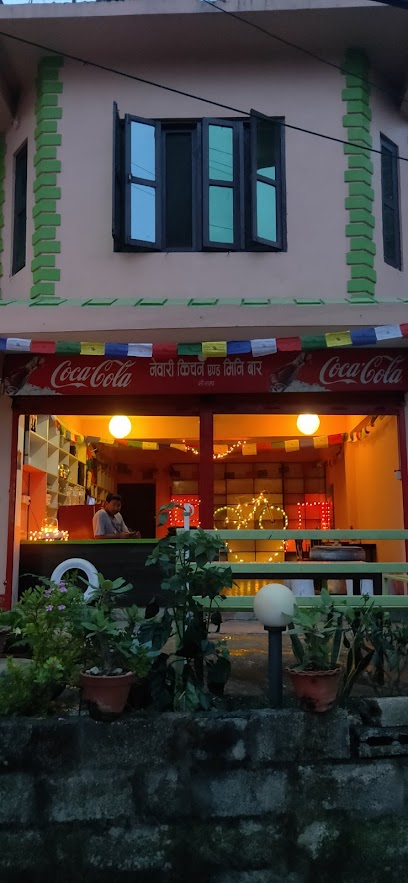
Local Phrases about Chitwan National Park
-
- Helloनमस्कार
[Namaskar] - Goodbyeछिक्क
[Chhik] - Yesहो
[Ho] - Noहोइन
[Hoin] - Please/You're welcomeकृपया
[Kripya] - Thank youधन्यवाद
[Dhanyabad] - Excuse me/Sorryमाफ गर्नुहोस्
[Mafi garnuhos] - How are you?तपाईंलाई कस्तो छ?
[Tapailai kasto chha?] - Fine. And you?राम्रो, तपाईंलाई?
[Ramro, tapailai?] - Do you speak English?तपाईंले अंग्रेजी बोल्नुहुन्छ?
[Tapainle angreji bolnuhunchha?] - I don't understandमलाई सम्झिएन
[Malai samjheen]
- Helloनमस्कार
-
- I'd like to see the menu, pleaseकृपया मेनू हेर्न चाहन्छु
[Kripya menu hern chahanchu] - I don't eat meatम मासु हाम्यैन
[Ma masu hamchain] - Cheers!चियर्स!
[Cheers!] - I would like to pay, pleaseकृपया भुक्तानी गर्न चाहन्छु
[Kripya bhuktani garn chahanchu]
- I'd like to see the menu, pleaseकृपया मेनू हेर्न चाहन्छु
-
- Help!मदद!
[Madad!] - Go away!दूर जाओ!
[Door jao!] - Call the Police!पुलिसलाई फोन गर!
[Police lai phone gar!] - Call a doctor!डाक्टरलाई फोन गर!
[Doctor lai phone gar!] - I'm lostम गुम भएको छु
[Ma gum bhaeko chu] - I'm illमलाई बिरामी छ
[Malai birami chha]
- Help!मदद!
-
- I'd like to buy...म खरीद गर्न चाहन्छु...
[Ma kharid garn chahanchu...] - I'm just lookingम बस हेरिरहेको छु
[Ma bas heriraheko chu] - How much is it?तिर्को दाम कति हो?
[Tirko dam kati ho?] - That's too expensiveत्यो धेरै महँगो छ
[Tyo dherai mahango chha] - Can you lower the price?के तपाईं दाम हाल्न सक्नुहुन्छ?
[Ke tapain dam halna saknuhunchha?]
- I'd like to buy...म खरीद गर्न चाहन्छु...
-
- What time is it?कति बजे छ?
[Kati baje chha?] - It's one o'clockएकबजे छ
[Ek baje chha] - Half past (10)दसबजे अघि दुईबजे
[Das baje agi dubaje] - Morningबिहान
[Bihaan] - Afternoonदिउसो
[Diuso] - Eveningसाँझ
[Saanjh] - Yesterdayहिजो
[Hijo] - Todayआज
[Aaj] - Tomorrowभोलि
[Bholi] - 1एक
[Ek] - 2दुई
[Dui] - 3तीन
[Teen] - 4चार
[Char] - 5पाँच
[Paanch] - 6छ
[Chha] - 7सात
[Saath] - 8आठ
[Aath] - 9नौ
[Nau] - 10दश
[Dash]
- What time is it?कति बजे छ?
-
- Where's a/the...?...कहाँ छ?
[...Kaha chha?] - What's the address?ठेगानाको ठेगाना के हो?
[Theganako thegana ke ho?] - Can you show me (on the map)?तपाईंले मलाई देखाउन सक्नु हुन्छ (नक्सामा)?
[Tapainle malai dekhaun saknuhunchha (naksama)?] - When's the next (bus)?अर्को (बस) कहिले छ?
[Arko (bas) kahile chha?] - A ticket (to ....)एक टिकट (..... मा)
[Ek ticket (..... ma)]
- Where's a/the...?...कहाँ छ?
History of Chitwan National Park
-
Chitwan Valley has a rich history dating back to ancient times. Archaeological evidence suggests that the area was inhabited as early as the prehistoric era. The indigenous Tharu people have lived in the region for centuries, developing a unique culture that blends with the natural environment. Their traditional farming practices and deep knowledge of the local flora and fauna have been passed down through generations.
-
During the 19th and early 20th centuries, Chitwan Valley was predominantly used as a hunting reserve by the ruling Rana dynasty of Nepal. The dense jungle and abundant wildlife made it an ideal location for royal hunting expeditions. These hunts often included high-profile guests from Europe and other parts of the world. The presence of the Ranas and their guests led to the construction of several hunting lodges and infrastructure within the park, remnants of which can still be seen today.
-
Chitwan National Park was established in 1973 as Nepal’s first national park. The primary objective was to protect the dwindling populations of endangered species such as the Bengal tiger, one-horned rhinoceros, and gharial crocodile. UNESCO recognized the park's unique biodiversity and cultural heritage by designating it a World Heritage Site in 1984. The establishment of the park marked a significant shift in Nepal's approach to conservation, focusing on habitat preservation and sustainable tourism.
-
International organizations have played a crucial role in the conservation of Chitwan National Park. The King Mahendra Trust for Nature Conservation (KMTNC), now known as the National Trust for Nature Conservation (NTNC), was established in 1982 with support from the World Wildlife Fund (WWF) and other global entities. These organizations have funded anti-poaching initiatives, community development programs, and scientific research to ensure the long-term sustainability of the park's ecosystem.
-
Tourism has had a profound impact on the communities surrounding Chitwan National Park. The influx of visitors has created economic opportunities for local residents, including employment in hotels, restaurants, and as nature guides. The park's management has also implemented community-based conservation programs, sharing a portion of tourism revenue with local villages. These initiatives aim to balance economic development with environmental preservation, fostering a sense of stewardship among the local population.
-
In recent years, Chitwan National Park has faced several conservation challenges, including habitat loss, human-wildlife conflict, and the effects of climate change. However, concerted efforts by the government, NGOs, and local communities have led to notable successes. The population of the one-horned rhinoceros, for example, has seen a significant increase due to effective anti-poaching measures and habitat restoration projects. These ongoing efforts highlight the dynamic and adaptive nature of conservation work in the park.
Chitwan National Park Essentials
-
Chitwan National Park is located in the southern part of Nepal, around 150 kilometers from Kathmandu. The nearest airport is Bharatpur Airport, which is about 10 kilometers from the park. From Kathmandu, you can take a domestic flight to Bharatpur, which takes around 25 minutes. Alternatively, you can take a tourist bus or hire a private vehicle from Kathmandu or Pokhara. The bus journey takes approximately 5-6 hours, while a private vehicle can make the trip in around 4-5 hours.
-
Within Chitwan National Park and the surrounding areas, local transportation options include taxis, rickshaws, and bicycles. Many lodges and hotels offer guided tours and safaris, which often include transportation. For more freedom, you can rent a bicycle or motorbike to explore the area at your own pace. Public buses connect major towns and villages around the park, but they can be crowded and less frequent.
-
The official currency in Nepal is the Nepalese Rupee (NPR). Credit cards are accepted in some hotels, restaurants, and larger shops, but it is advisable to carry cash, especially in smaller establishments and rural areas. ATMs are available in Bharatpur and Sauraha, but it is wise to withdraw sufficient cash before heading into the more remote areas of the park.
-
Chitwan National Park is generally a safe destination for tourists. However, like any travel destination, it is advisable to take standard precautions. Avoid walking alone at night in unfamiliar areas and keep an eye on your belongings in crowded places. Petty theft can occur, so stay vigilant. There are no specific high-crime areas targeting tourists, but it is always best to remain aware of your surroundings.
-
In case of emergency, dial 100 for police assistance or 102 for medical emergencies. The nearest medical facilities are located in Bharatpur, which has hospitals and clinics. It is recommended to have travel insurance that covers medical emergencies. For minor health issues, there are pharmacies in Sauraha where you can purchase over-the-counter medications.
-
Fashion: Do dress modestly, especially when visiting local villages or religious sites. Avoid wearing revealing clothing. Religion: Do respect local customs and traditions. Always remove your shoes before entering temples. Public Transport: Do be respectful and give up your seat to elderly passengers. Don't eat or drink on public transport. Greetings: Do greet people with a 'Namaste' by pressing your palms together. A handshake is also acceptable in more urban areas. Eating & Drinking: Do try local delicacies and accept food offerings graciously. Don't refuse hospitality, as it is considered impolite.
-
To experience Chitwan National Park like a local, visit the Tharu villages where you can learn about the indigenous Tharu culture. Participate in a traditional Tharu dance performance or try your hand at cooking local dishes. Engage with locals, as they are often friendly and willing to share stories about the park's history and wildlife. Don't miss the chance to take a canoe ride on the Rapti River for a unique perspective of the park's wildlife.
Trending Landmarks in Chitwan National Park
-
Annapurna Conservation Area
-
Sarangkot View Tower
-
Seti River Gorge
-
Chamere Gufa
-
World Peace Pagoda
-
Elephant Breeding Center
-
Langtang National Park
-
Tikauli Jungle
-
Green Park Chitwan
-
NARAYANI RIVERSIDE
-
Devghat Dham
-
Landmark Forest-Park
-
UMBRELLA STREET, PATIHANI
-
Jalbire Jharna
-
New Sauraha Tharu Cultural House
Nearby Cities to Chitwan National Park
-
Things To Do in Bandipur
-
Things To Do in Gorkha
-
Things To Do in Pokhara
-
Things To Do in Patan
-
Things To Do in Kathmandu
-
Things To Do in Bhaktapur
-
Things To Do in Nagarkot
-
Things To Do in Lumbini
-
Things To Do in Patna
-
Things To Do in Namche Bazaar
-
Things To Do in Varanasi
-
Things To Do in Lucknow
-
Things To Do in Darjeeling
-
Things To Do in Kanpur
-
Things To Do in Siliguri










